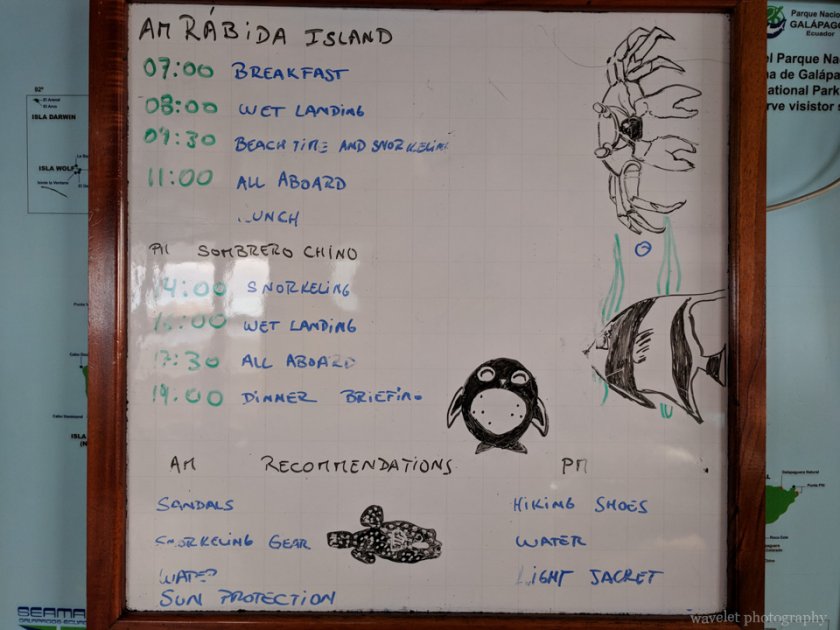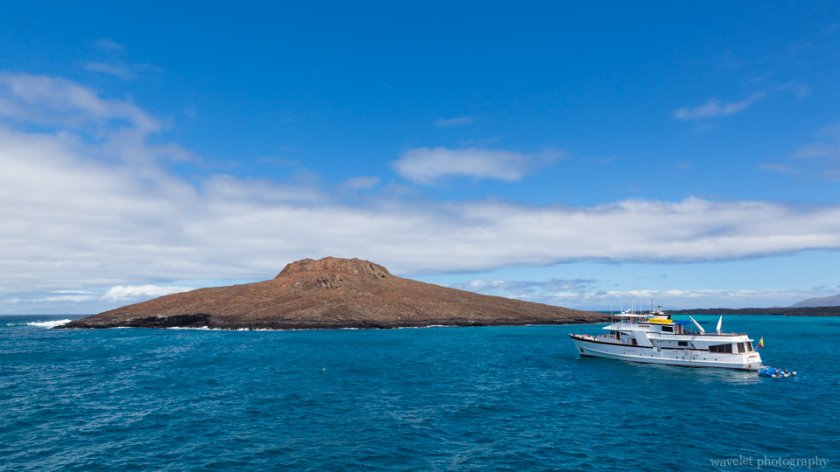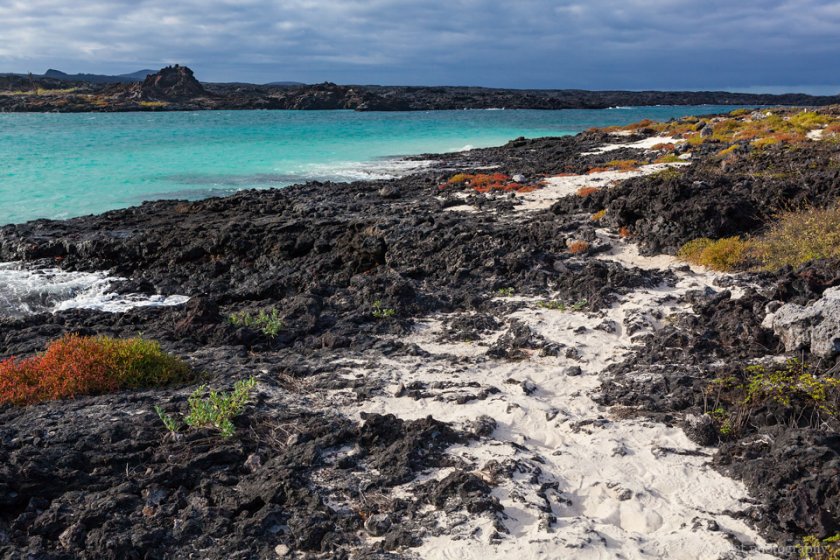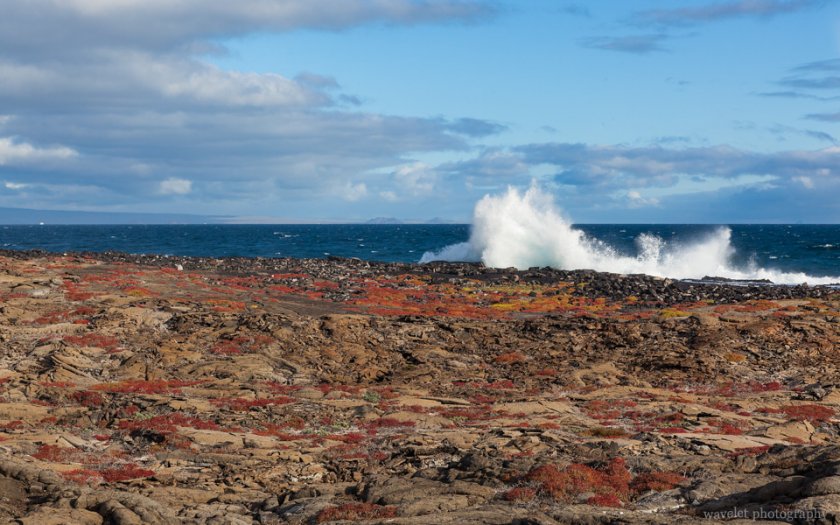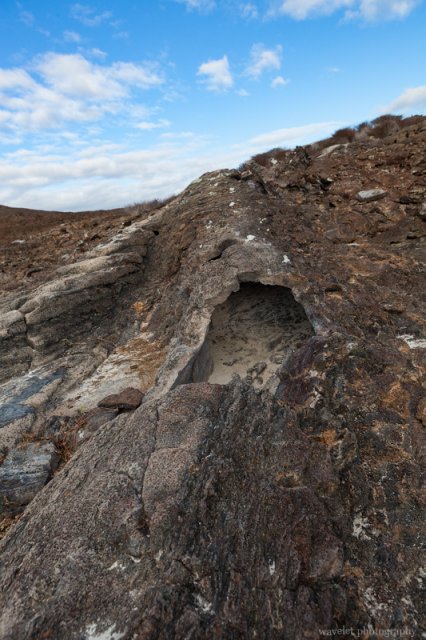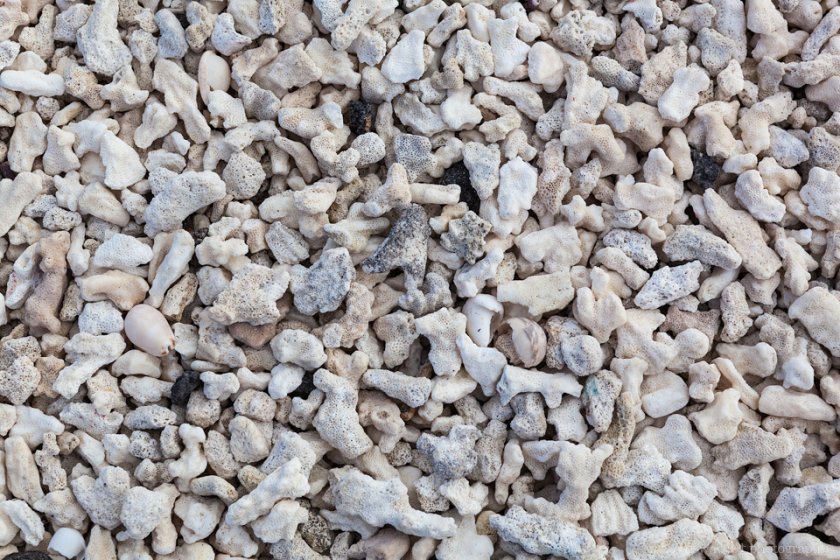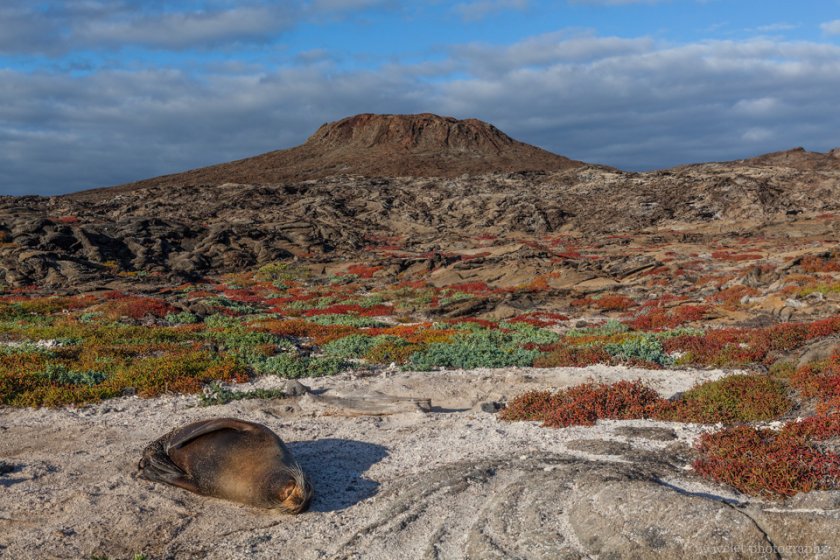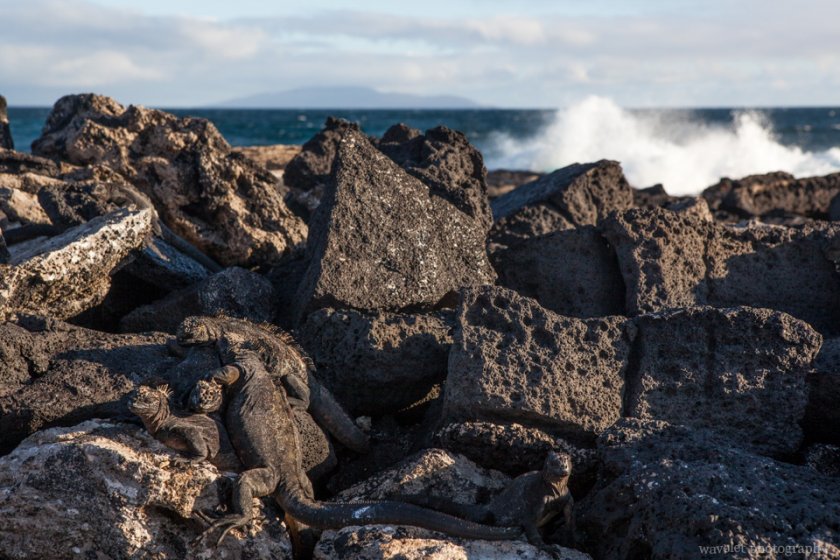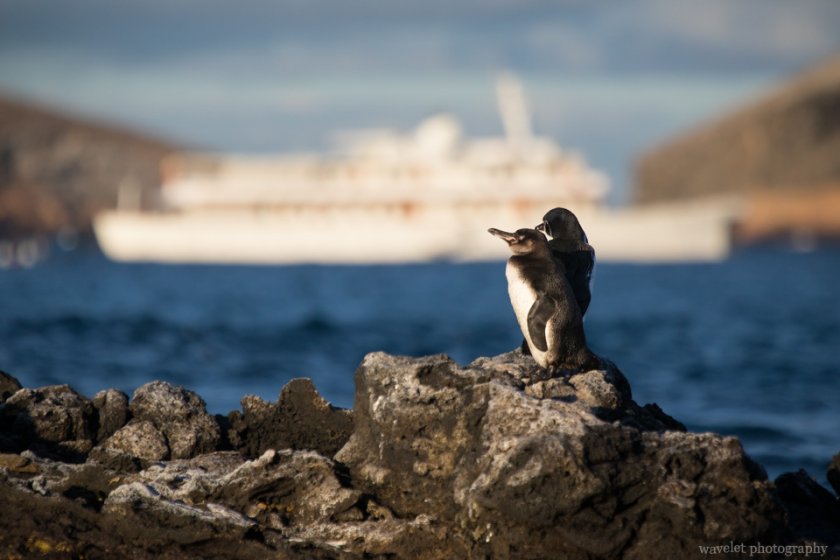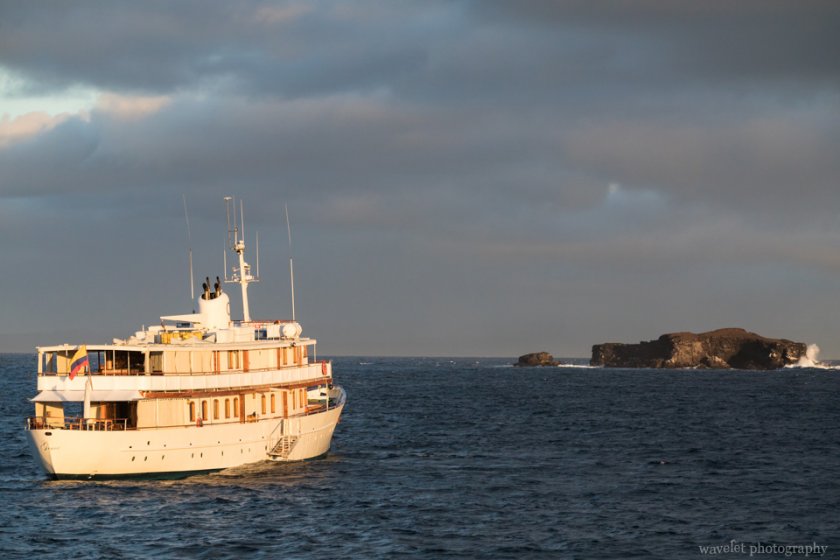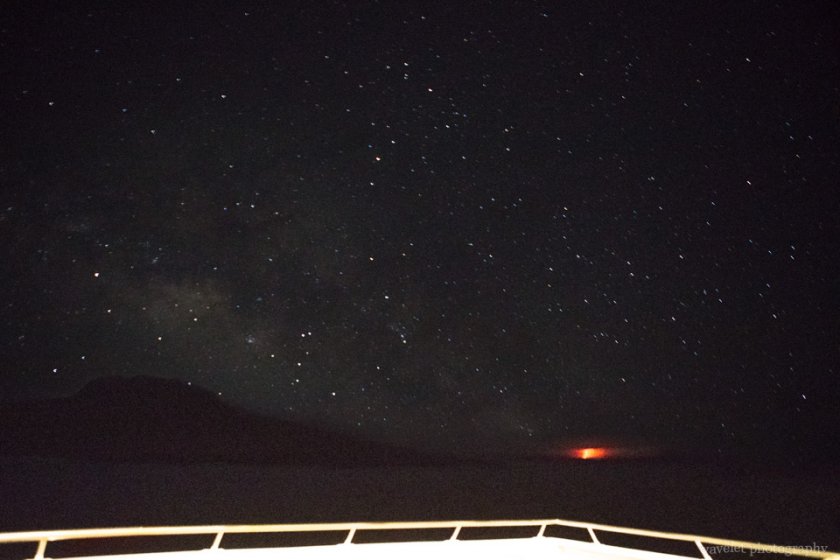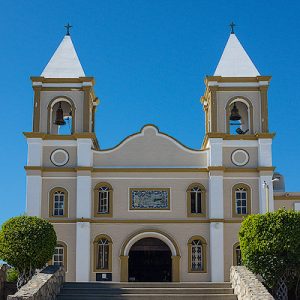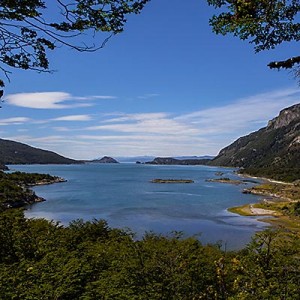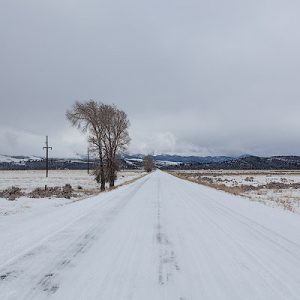2018.7.4
Leaving Rábida island, the boat headed northeast along the coast of Santiago Island. In an hour or so, we arrived at Sombrero Chino, which means Chinese Hat in English. Such straw hats are also very common in Vietnam and Southeast Asia, with either round or pointed tops.
The volcanic cone of Sombrero Chino is called “spatter cone“, which is actually the built-up of lava threw out by the volcano vent, so it is usually not too high. Originally part of Santiago Island, over time, weathering made the cone lower and lower, and the sea water gradually eroded the land connecting Santiago Island, creating a channel of about 600 feets.
We landed at the beach on the north side of the island. Wet landing is generally on the beach, where you disembark the boat in the water and walk to shore, while dry landing requires a suitable reef or dock so you can disembark directly onto land. Sombrero Chino is less than a quarter a square mile in size. We walked south along the coast facing the Santiago Island, with volcanic beaches all along the way. Low plants cover the ground in a variety of colors, from green to dark red, some even extremely bright red. The channel between the two islands is very narrow and the water is turquoise blue.
Various forms of volcanic rock can be seen on the island, both jagged ‘a’a and gentler pahoehoe. Some are apparently pipes formed by the flow of cooling lava, and collapsed down later. It is similar to the craters on Santa Cruz Island, only on a much smaller scale.
There is a sea lion colony on Sombrero Chino. We saw many sea lions sunbathing on the beach, with the Sombrero Chino as the background. The trail that you can walk on the island is only about 400 yards. At the end of the trail, we saw a few more familiar marine iguanas, crawling on the volcanic rocks and keeping themselves warm.
Just as we were boarding our zodiac and preparing to return to the boat, we spotted two Galápagos penguins on the reef. We had seen them on our second day in the archipelago and had not seen them again until then. They are indeed small, nowhere near as imposing as the Emperor and King penguins. But they are very lucky not to have to go through the long, harsh winters that others do.
The sea was calm, our boat was moored near Sombrero Chino for the night. As night fell, Marco took us to the top deck. There was no other light source around, so we could see the stars clearly. Marco used a small laser pointer in his hand to shoot a ray of light to point out the location of the constellations.
In the distant sky, we could faintly see a bright red light, in the direction of Isabela Island in the distance. Marco was particularly excited to see it, after confirming that it was indeed the Sierra Negra volcano on Isabela Island. We had walked at the foot of the volcano a few days before. This is the first time I saw the eruption of the volcano with my own eyes, but unfortunately it was too far away. I wanted to take a picture with my camera, but the boat was undulating so much, but you can get the sense of it in this picture.
